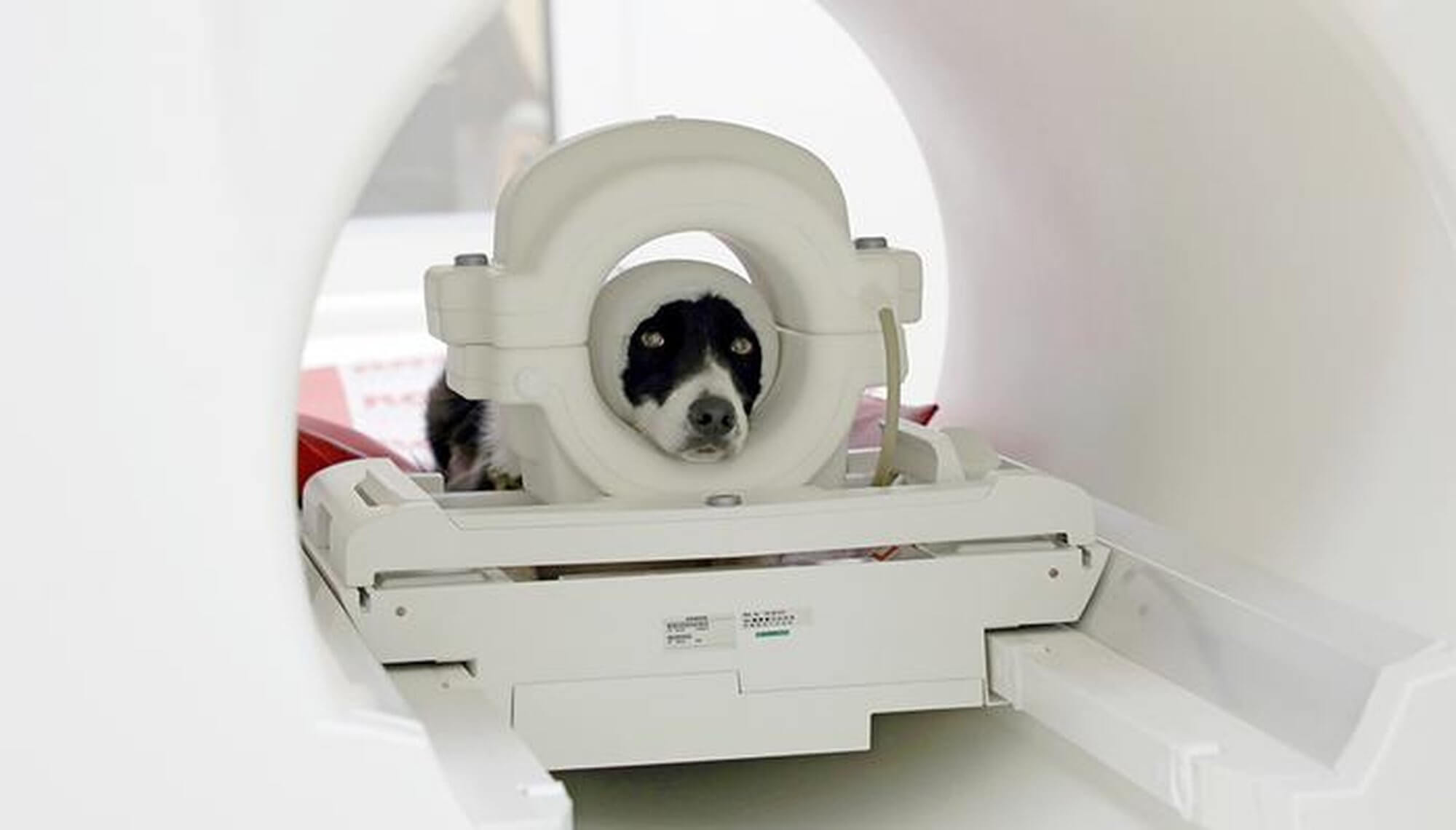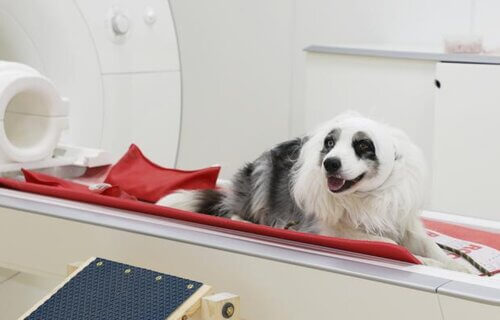VIENNA, Austria — Humans and primates have specialized brain regions in the temporal lobe that are dedicated to perceiving faces and bodies. Interestingly, dogs also possess a temporal lobe that evolved independently. A groundbreaking study conducted by researchers at the University of Vienna and the University of Veterinary Medicine Vienna has uncovered fascinating insights into the similarities between dogs and humans in perceiving body postures. The study emphasizes the significant role of the temporal lobe in social communication and perception and the findings shed light on the remarkable bond between dogs and humans and how they understand each other and their surroundings.
The research group used magnetic resonance imaging (MRI) to study the brains of both humans and pet dogs. Only a handful of research groups worldwide have the capability to conduct MRI studies with dogs. The team developed training protocols to acclimate the dogs to the MRI environment without the need for sedation, ensuring their comfort and safety throughout the process.

The study involved 40 human participants and 15 pet dogs, providing the first evidence that dogs possess a specialized brain region in the temporal lobe for perceiving body postures, akin to humans. Moreover, the researchers identified additional brain regions in dogs that are involved in both facial and bodily perception. Notably, unlike humans, the activation of areas responsible for processing smells was observed in dogs when viewing faces and bodies.
While humans tend to focus on facial expressions during communication, the study suggests that dogs prioritize body postures and holistic perception.
“Our results suggest that faces are also an important source of information for dogs. However, body postures and holistic perception seem to play a superior role,” explains study lead author Magdalena Boch, in a media release.
The specialized brain regions in dogs exhibited similar activity patterns when presented with pictures of other dogs or humans. This finding underscores the close bond that has developed between dogs and humans over thousands of years.
“Dogs and humans may not be closely related, but they have been close companions for thousands of years,” says researcher Ludwig Huber. “Therefore, comparing dogs and humans also gives us new insights into the so-called convergent evolution of social perception and information processing processes.”
The study reveals fascinating parallels between dogs and humans in their brain responses to body postures. The research highlights the deep connection between these two species and provides valuable insights into the convergence of social perception and information processing. The findings deepen our understanding of canine cognition and enhance our appreciation of the unique bond shared between dogs and humans.
The study is published in the journal Communications Biology.


No surprise. Could they repeat this with wolves?